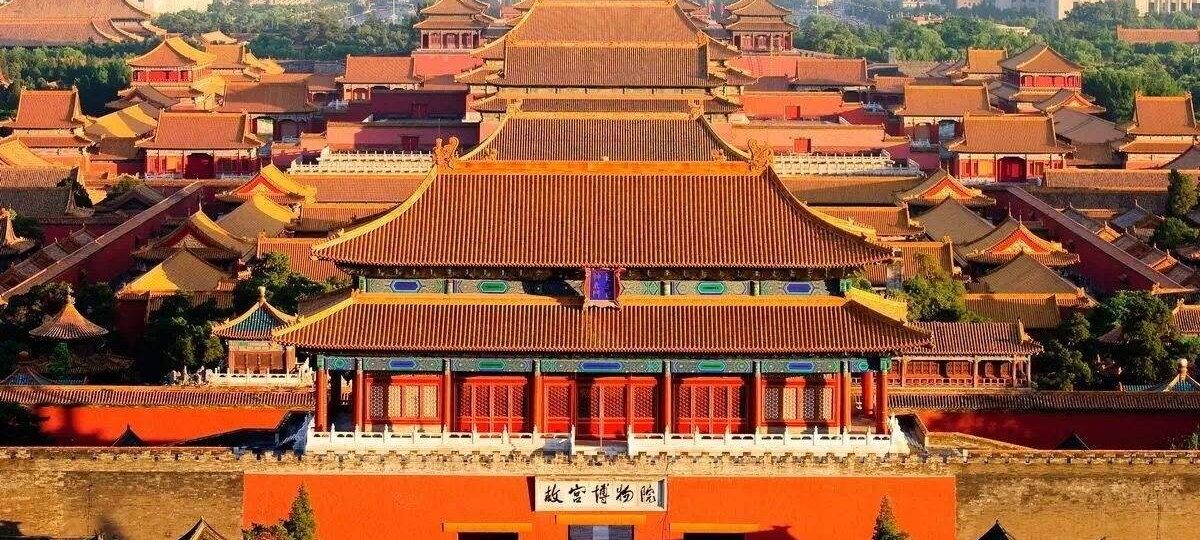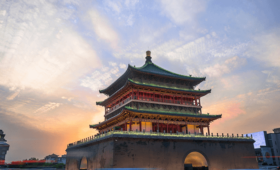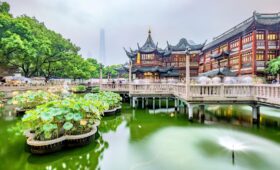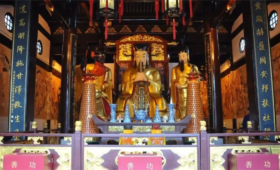The Forbidden City, also known as the Palace Museum, is a historic imperial palace located in the center of Beijing, China.
It was built during the Ming Dynasty (1368-1644) and served as the home of the emperors of China for almost 500 years until the fall of the Qing Dynasty (1644-1912).
The palace covers an area of over 720,000 square meters and features over 90 palaces and courtyards with more than 9,000 rooms.
The architecture of the Forbidden City is a stunning example of traditional Chinese design, featuring intricate carvings, colorful decorations, and beautiful gardens.
Today, the Palace Museum is a popular tourist attraction and has been designated a UNESCO World Heritage Site.
Visitors can explore the various halls, pavilions,and galleries that showcase Chinese art, cultural artifacts,and historical treasures from the imperial collection.
The Forbidden City is a must-visit destination for anyone interested in Chinese history, culture, and architecture.
History
When Hongwu Emperor’s son Zhu Di became the Yongle Emperor,
he moved the capital from Nanjing to Beijing, and construction began in 1406 on what would become the Forbidden City.
Construction lasted 14 years and required more than a million workers.
Material used include whole logs of precious Phoebe zhennan wood found in the jungles of south-western China,
and large blocks of marble from quarries near Beijing.
The floors of major halls were paved with “golden bricks”, specially baked paving bricks from Suzhou.
From 1420 to 1644, the Forbidden City was the seat of the Ming dynasty.
In April 1644, it was captured by rebel forces led by Li Zicheng,
who proclaimed himself emperor of the Shun dynasty.
He soon fled before the combined armies of former Ming general Wu Sangui and Manchu forces,
setting fire to parts of the Forbidden City in the process.
By October, the Manchus had achieved supremacy in northern China,
and a ceremony was held at the Forbidden City to proclaim the young Shunzhi Emperor as ruler of all China under the Qing dynasty.
The Qing rulers changed the names on some of the principal buildings, to emphasise “Harmony” rather than “Supremacy”,
made the name plates bilingual (Chinese and Manchu),and introduced Shamanist elements to the palace.
In 1860, during the Second Opium War, Anglo-French forces took control of the Forbidden City and occupied it until the end of the war.
In 1900 Empress Dowager Cixi fled from the Forbidden City during the Boxer Rebellion,
leaving it to be occupied by forces of the treaty powers until the following year.
After being the home of 24 emperors – 14 of the Ming dynasty and 10 of the Qing dynasty –
the Forbidden City ceased being the political centre of China in 1912 with the abdication of Puyi, the last Emperor of China.
Under an agreement with the new Republic of China government, Puyi remained in the Inner Court,
while the Outer Court was given over to public use,until he was evicted after a coup in 1924.
The Palace Museum was then established in the Forbidden City in 1925.
In 1933, the Japanese invasion of China forced the evacuation of the national treasures in the Forbidden City.
Part of the collection was returned at the end of World War II,
but the other part was evacuated to Taiwan in 1948 under orders of Chiang Kai-shek,
whose Kuomintang was losing the Chinese Civil War.
This relatively small but high quality collection was kept in storage until 1965,
when it again became public, as the core of the National Palace Museum in Taipei.
After the establishment of the People’s Republic of China in 1949,
some damage was done to the Forbidden City as the country was swept up in revolutionary zeal.
During the Cultural Revolution, however, further destruction was prevented
when Premier Zhou Enlai sent an army battalion to guard the city.[30]
The Forbidden City was declared a World Heritage Site in 1987 by UNESCO as the “Imperial Palace of the Ming and Qing Dynasties”,
due to its significant place in the development of Chinese architecture and culture.
It is currently administered by the Palace Museum.
In the early 21st century, the Palace Museum carried out a sixteen-year restoration project to repair
and restore all buildings in the Forbidden City to their pre-1912 state,
with the goal that 76% of the palace would be open to the public by 2020.
As a result of that project, the Shoukang Palace was officially opened to the public in 2013,
after initially being displayed in its original state.
A sculpture museum was opened in the Cining Palace in 2015.
Also opened in 2015 were the precincts around Cining Palace, the Yanyin Building and the East Glorious (Donghua) Gate.




